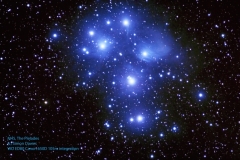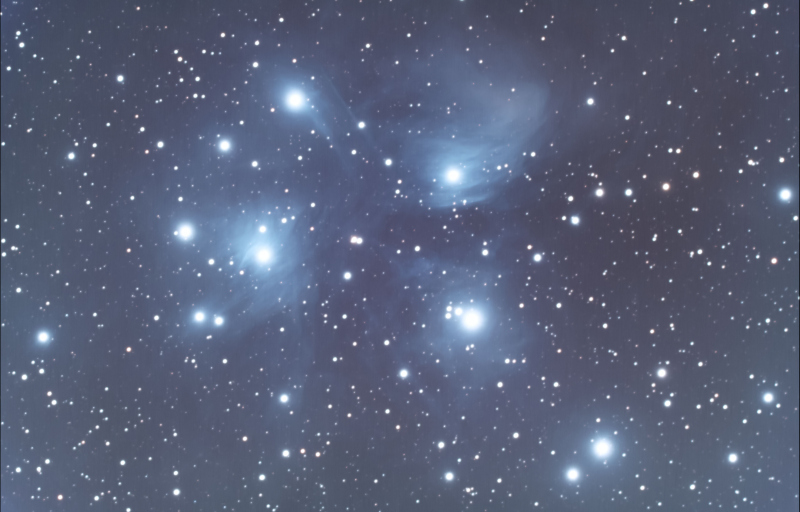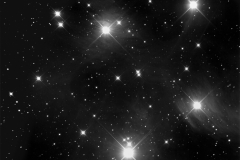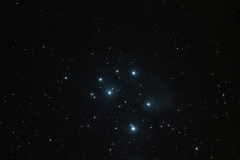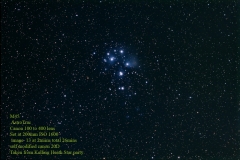The Pleiades (M45) are an open star cluster in the constellation of Taurus. It is among the nearest star clusters. It is the cluster most obvious to the naked eye in the night sky. Pleiades has several meanings in different cultures and traditions.
The cluster is dominated by hot blue stars that have formed within the last 100 million years. Dust that forms a faint reflection nebulosity around the brightest stars was thought at first to be left over from the formation of the cluster (hence the alternate name Maia Nebula after the star Maia), but is now known to be an unrelated dust cloud in the interstellar medium that the stars are currently passing through. Astronomers estimate that the cluster will survive for about another 250 million years, after which it will disperse due to gravitational interactions with its galactic neighbourhood.
Images by Simon Dawes
Images by Honor Wheeler
Image by Brian Thompson
Date: 18/02/2015
Equipment: Orion Optics VX10 scope, Skywatcher NEQ6 mount, Mono Atik 383L camera, QHY5 Guide Camera.
Frames:13 X 120s lights, no darks.
Processing: Stacked and processed in Astro Art.
Imaged by Keith Rickard
Method: Olympus OM1n 210mm telephoto lens, piggy-backed on LX200 8″, Kodak Elitechrome ISO 200 film, 20 minutes. (Published in Astronomy Now!)


